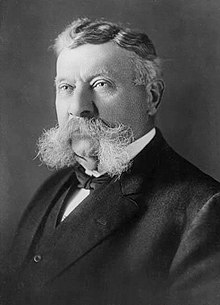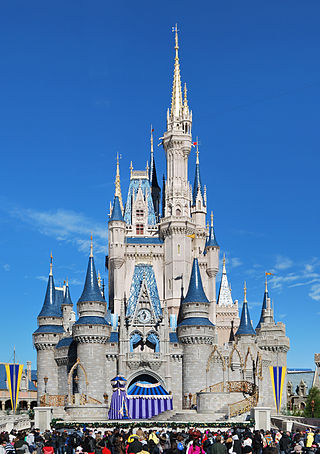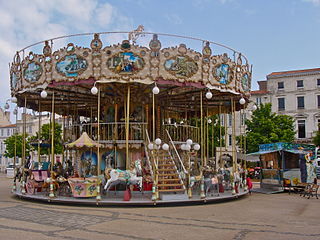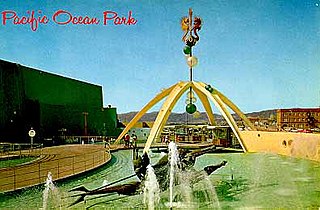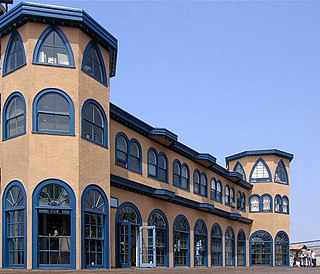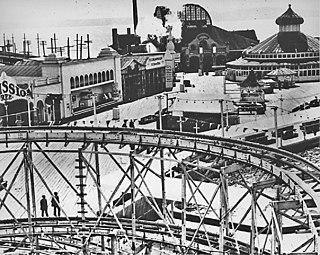| Year | Name | Original location | Notes |
|---|
| 1876 | Vandeveer's Bathing Pavilion Carousel | Coney Island, New York | Name changed to Balmer's Bathing Pavilion. Menagerie ride with no jumpers, the first of over 25 carousels at Coney Island. |
|---|
| 1877 | Feltman's Carousel | Feltman's Beer Garden, Coney Island, New York | Menagerie, no jumpers, built, partially burned in the West Brighton fire of 1899, or possibly earlier because Feltman (the inventor of the hot dog) bought a second carousel from Looff in the 1890s. [5] |
|---|
| 1880 | Coney Island Carousel | Coney Island, New York |
|---|
| 1884 | Roger Williams Park Carousel | Providence, Rhode Island | Moved to Slater Park, Pawtucket, Rhode Island, in 1910. 3-abreast stationary. Was the fastest Looff carousel but was slowed down in recent years. Listed on National Register of Historic Places. |
|---|
| 1886 | Midland Beach Carousel | Staten Island, New York | Operated 1890 to 1905, 3 abreast, menagerie. Carousel was moved to Keansburg, New Jersey by Frank Drodge, opening in 1913 after being refurbished by Mangels. Mr. Drodge sold the carousel to R.A.C. Amusements in 1966. The carousel stayed in operation at the Keansburg amusement park until all horses and animals were sold by Gournseys auction in 1985. The Looff then ran for another decade with Thiel horses on it until it was sold off and replaced with other attractions. |
|---|
| 1888 | Wesley Lake Carousel | Asbury Park, New Jersey | All horses had real horsehair tails. A few animals were carved by Gustav Dentzel to meet a deadline for the three-row, brass ring carousel. Operated 1888-1988 until the beach-front, indoor amusement park, Palace Amusements, closed. The 78 animals were individually auctioned & the Carousel unit as one piece. Palace Amusements was put on the National Register of Historic Places before being demolished in 2004. [6] |
|---|
| 1889 | Salisbury Beach Carousel | Salisbury, Massachusetts | 1889 to 1907 |
|---|
| 1890 | Broadway Flying Horses Carousel | Coney Island, New York | Located at Coney Island until 1905. At Salisbury Beach, Massachusetts. from 1914-1976. Moved to Seaport Village, San Diego, California, in 1980. [7] |
|---|
| 1890 to 1897 | South Beach Carousel | Staten Island, New York | |
|---|
| 1891 | Rocky Point Amusement Park Carousel | Warwick, Rhode Island | Looff also built a "Fandango" Ferris Wheel with 16 gondolas made from 4-seater carousel chariots. |
|---|
| 1892 | Young's Ocean Pier Carousel | Atlantic City, New Jersey | |
|---|
| 1890 to 1897 | Narragansett Pier Carousel | Narragansett, Rhode Island | |
|---|
| 1895 | Crescent Park Carousel | Riverside, East Providence, Rhode Island | Used by Looff as showcase for his work, all animals different; operational brass rings; Ruth & Sons organ; listed on National Register of Historic Places |
|---|
| 1895 | Lincoln Park Carousel | Dartmouth, Massachusetts | |
|---|
| 1896 | Savin Rock Park Carousel | West Haven, Connecticut | Moved to Lake Compounce, Bristol, Connecticut in 1911 |
|---|
| c. 1893 | Roger Williams Park Carousel | Providence, Rhode Island | Replaced in 1937 with PTC #44 |
|---|
| 1894 | The Looff Carousel at Slater Park | Slater Memorial Park, Pawtucket, Rhode Island | Originally located at Roger Williams Park, Providence, RI. Moved to present location in 1910. Originally was fastest Looff carousel made-was slowed down recently. Listed on National Register of Historic Places. |
|---|
| 1898 | Burlington Island Park | Burlington, New Jersey | Moved to Seaside Heights, NJ in 1932. [8] The chariots and some animals were carved by Dentzel, Morris, Carmel, and Illions. Located in a 10-sided unenclosed building on boardwalk pier; 4 Rows, 35 Jumping Horses, 18 Standing Horses, 5 Menagerie Animals (1 Lion, 1 Tiger, 1 Mule, 2 Camels), 2 Chariots, 2016 Lightbulbs, and 15 original antique paintings from 1910 in center casing. [9] The music is provided by the only continuously operating Wurlitzer 146 Military Band Organ in the state. [10] Dr. Floyd L. Moreland bought and restored it in 1984. The carousel survived Hurricane Sandy in 2012. [11] |
|---|
| 1898 | Canobie Lake Park Carousel | Salem, New Hampshire | Moved to present location in 1906 |
|---|
| 1889 | Salisbury Beach Carousel | Salisbury, Massachusetts | 1889 to 1907 |
|---|
| 1898 | Rosen Heights Carousel | Fort Worth, Texas | 1898 to 1907. |
|---|
| 1902/1909(Looff-Murphy Bros. Conversion) | Sherman's Carousel | Caroga Lake, New York | Looff/Murphy carousel platform and mechanism populated with 50 metal animals by (Theel mfg.), in original 12-sided Looff carousel building w/ stained glass windows. Eighteen jumpers and no chariots. Original hand-carved Looff animals were sold in late 1970s to private collectors. Carousel is owned privately but operated by CarogaArts Collective and open to the public on a limited basis. This carousel is thought to have been relocated to Sherman’s in the 1930s from a park in Utica, New York. *Note: This carousel is almost identical to the one operated at Lake Compounce in Connecticut. |
|---|
| 1900 | Lakeside Park Carousel | Syracuse, New York | Moved 1908 to Rocky Point Amusement Park, Warwick, Rhode Island, and 1930 to Goddard Park, Warwick, Rhode Island |
|---|
| 1903 | Lakeside Park Carousel | Port Dalhousie, Ontario | Moved to present location in 1921 |
|---|
| 1904 | Fair Park Carousel | Dallas, Texas | 1958 to 1967: Pacific Ocean Park, Santa Monica, California; 1967 to 1982: Spanaway, Washington; 1982 to 1992: Willamette Center, Portland, Oregon; 1992 to 1997: AmeriFlora '92, Columbus, Ohio; 1997 to 2004: Media City Center Mall, Burbank, California; 2004 to present: Seaport Village, San Diego, California. |
|---|
| 1905 | Island Park Carousel | Portsmouth, Rhode Island | Survived 1938 hurricane |
|---|
| 1905 | Rosen Heights Carousel | Fort Worth, Texas | 1905 to 1907 |
|---|
| 1906 | The Children's Creativity Museum—LeRoy King Carousel (previously named the Zeum Carousel) | Yerba Buena Gardens, San Francisco, California | Built in 1906 for San Francisco, sent instead to Seattle's Luna Park due to 1906 earthquake, returned to Playland-at-the-Beach, San Francisco, in 1914 until 1972; 1972 to 1983: In storage at Roswell, New Mexico for restoration; 1983 to 1998: Shoreline Village, California; 1998: Yerba Buena Gardens, San Francisco, California |
|---|
| 1908 | Heritage Museum Carousel | Heritage Museums and Gardens, Sandwich, Massachusetts | Original location Crescent Park, Riverside, Rhode Island, moved to Meridian, Mississippi, then to Provincetown, Massachusetts, then to present location in 1969 |
|---|
| 1908 | Burlington Island Park Carousel | Burlington, New Jersey | Moved to Casino Pier, Seaside Heights, NJ in 1932. The chariots and some animals were carved by Dentzel, Morris, Carmel and Illions. Located in a ten-sided open building on boardwalk pier - 4-abreast, 35 jumpers, 18 standers, 5 menagerie (Lion, Tiger, Mule, 2 Camels), 2 Chariots, 2016 light bulbs, and 15 original antique paintings from 1910 on center casing. Music provided by the only continuously operating Wurlitzer 146 Military Band Organ in the state. Dr. Floyd L. Moreland bought and restored the ride in 1984. The carousel survived Hurricane Sandy in 2012. |
|---|
| 1908 | Lighthouse Point Park Carousel | New Haven, Connecticut | Moved to present location in 1916 |
|---|
| 1909 | Harveys Lake | Harveys Lake, Pennsylvania | Originally located in Harveys Lake, Pennsylvania, moved to Florida in 1986 and International Market World, Auburndale, Florida, in 1996 |
|---|
| 1909 | Natatorium Park | Spokane, Washington | A wedding gift for Looff's daughter Emma Looff and her husband Louis Vogel, who later owned Natatorium Park; moved to present location at Riverfront Park in Spokane in 1975; operational brass rings; Ruth & Sons organ; National Historic Landmark |
|---|
| 1896 or 1898 | Whalom Park Carousel [12] | Pleasure Bay Park, Long Branch, NJ | Moved from Long Branch to Bradley Beach, NJ in 1910 and then to Whalom Park in 1914; featured 4 Looff greyhounds and 2 Looff Sea Dragons. [12] [13] Broken up at auction April 15, 2000 [13] |
|---|
| 1909 | Oklahoma State Fair Carousel | Oklahoma City, Oklahoma | With a figure-8 coaster |
|---|
| 1910 | Saltair Park Carousel | Salt Lake City, Utah | Moved to American Fork, Utah, in 1959 and sold for parts in 1986; Moved to Nederland, Colorado. Scott Harrison used the Looff frame and installed new, whimsically-carved figures. [14] |
|---|
| 1910 | Fraser's Million Dollar Pier Carousel | Santa Monica, California | Burned down in September 1912 |
|---|
| 1911 | The Pike Carousel | Long Beach, California | Burned down in 1943 |
|---|
| 1911 | Santa Cruz Beach Boardwalk Carousel | Santa Cruz, California | National Historic Landmark, brass rings, still in use at original location |
|---|
| 1911 | Fantasy Fair Carousel | Fantasy Fair (Woodbine Centre),Toronto, Ontario | Originally built in Long Beach, CA, sold by Bud Hurlbut and moved to present location in 1985; Looff platform with replica fiberglass animals c. 1980s. Previously at Redondo Beach. |
|---|
| 1911 | Venice Pier Carousel | Venice, California | |
|---|
| c. 1913 | Grand Carousel | Knoebels, Elysburg, Pennsylvania | Moved to present location in 1942 from Riverside Park in Piscataway Township, New Jersey; Looff frame, Carmel horses; operational brass rings |
|---|
| 1915 | Pan Pacific International Exposition Carousel | San Francisco, California | The Exposition celebrated the opening of the Panama Canal. |
|---|
| 1916 | Santa Monica Pier Carousel | Santa Monica, California | Replaced in 1947 with PTC #62; Looff Hippodrome carousel building is a National Historic Landmark. Looff also built the Big Dipper Coaster. |
|---|
| 1925 | Redondo Beach Carousel | Redondo Beach, California | After being removed from Redondo Beach, the carousel remained in the Looff factory which was purchased by Ross R. Davis and his son John O. Davis. Some of the outside row figures remained with the Looff family. |
|---|
| 1926 | Griffith Park Merry-Go-Round | Griffith Park, Los Angeles, California | Spillman/Looff mix. The carousel, which is still running, was originally a Spillman. After the Davis family purchased the contents of the Looff factory, some of the Looff figures were interspersed with the original Spillmans. |
|---|
| 1928 | Lakewood Park Carousel | Barnesville, Pennsylvania | Moved to Van Andel Museum, Grand Rapids, Michigan, in 1982 |
|---|
|
